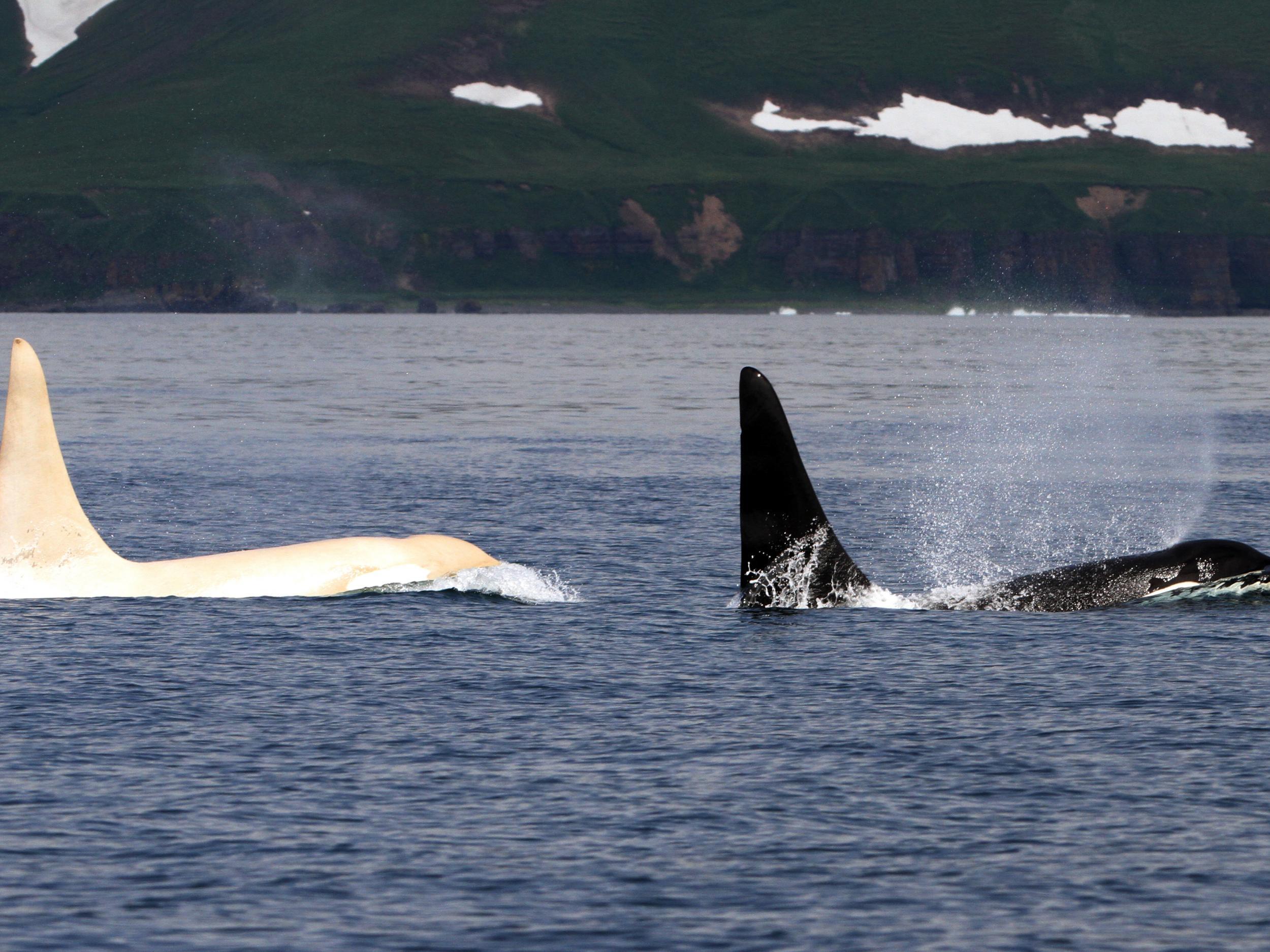Five rare white killer whales spotted together in a sign of dangerous inbreeding
'To have five – or up to eight – in one area of the Russian north-western Pacific, is an indication that there may well be inbreeding issues there'

At least five white orcas have been spotted in the north-west Pacific in a sign that they could be becoming dangerously inbred, researchers have said.
Killer whales, as they are also known, are usually black and white but white ones have occasionally been seen before.
However, they are usually lone, immature animals and it is thought they have a tendency to die young as the trait can be associated with health problems.
Now researchers are concerned that at least one group of the apex predators are starting to struggle after between five and eight white orcas were seen in August last year off Russia's Kuril Islands, north of Japan.
Their findings have just been revealed in an academic paper in the journal Aquatic Mammals.
Erich Hoyt, who works with the Far East Russia Orca Project and who spotted Iceberg in 2010 and 2015, told The Independent their most significant finding was the number of white orcas in the group.
Normally, he said, they were "quite rare" and researchers in the Antarctic, where there are tens of thousands of killer whales, might never have seen one.
"To have five – or up to eight – in one area of the Russian north-western Pacific, is an indication that there may well be inbreeding issues there," said Mr Hoyt, who is a member of specialist cetacean group at the International Union for Conservation of Nature (IUCN) and also a senior research fellow with the UK-based group Whale and Dolphin Conservation.
It is not clear whether they are albino orcas or if the colouring is for some other reason.
Mr Hoyt said while there were thought to be a total of perhaps 50,000 orcas around the world, they tended to live in breeding groups ranging from a few dozen to 600 or 700.
"If a few females are captured for aquariums or knocked down for other reasons, then you can really put the breeding unit in jeopardy," he said.
"I think all large predators are in trouble on this planet because we are sort of squeezing them from all angles.
"They are not treated as an endangered species by the IUCN Red List but that's mostly because they haven't been evaluated."
Chemical pollutants, such as PCBs from widespread plastic rubbish in the oceans, are a particular problem.
Plants grow on plastic, it is consumed by marine life and then concentrates in animals higher up the food chain, with top predators like orcas the most severely affected.
"Killer whales are the most contaminated species on Earth," Mr Hoyt said.
But one white male is believed to be at least 22 as he was already mature when he was last spotted in 2010.
Named Iceberg, his relatively advanced years are cause for some hope.
"That is remarkable we have got a mature whale, which you can tell from the big dorsal fin. He was at least 15 to 17 years old when we saw him in 2010, so now he's at least 22. That's significant adulthood," Mr Hoyt said.
Orcas are immature until about 15 and the males can live for up to 60 years.
The colouring of a captive white orca called Chimo was the result of Chediak-Higashi syndrome, which also caused several medical problems.
She only lived to the age of four despite females being able to survive until 100.
Join our commenting forum
Join thought-provoking conversations, follow other Independent readers and see their replies
Comments